The thing that got me really hiking through Joshua Tree National Park back in 2009 was the fact that it was the only way to get to the Wall Street Mill site.
Back then, I was in shape enough and confident enough—or stupid enough—to trek out there by myself.
But my hiking abilities have really declined since my car accident in 2014—and so I've had to curtail my adventures and stick to easier hikes, usually with groups.
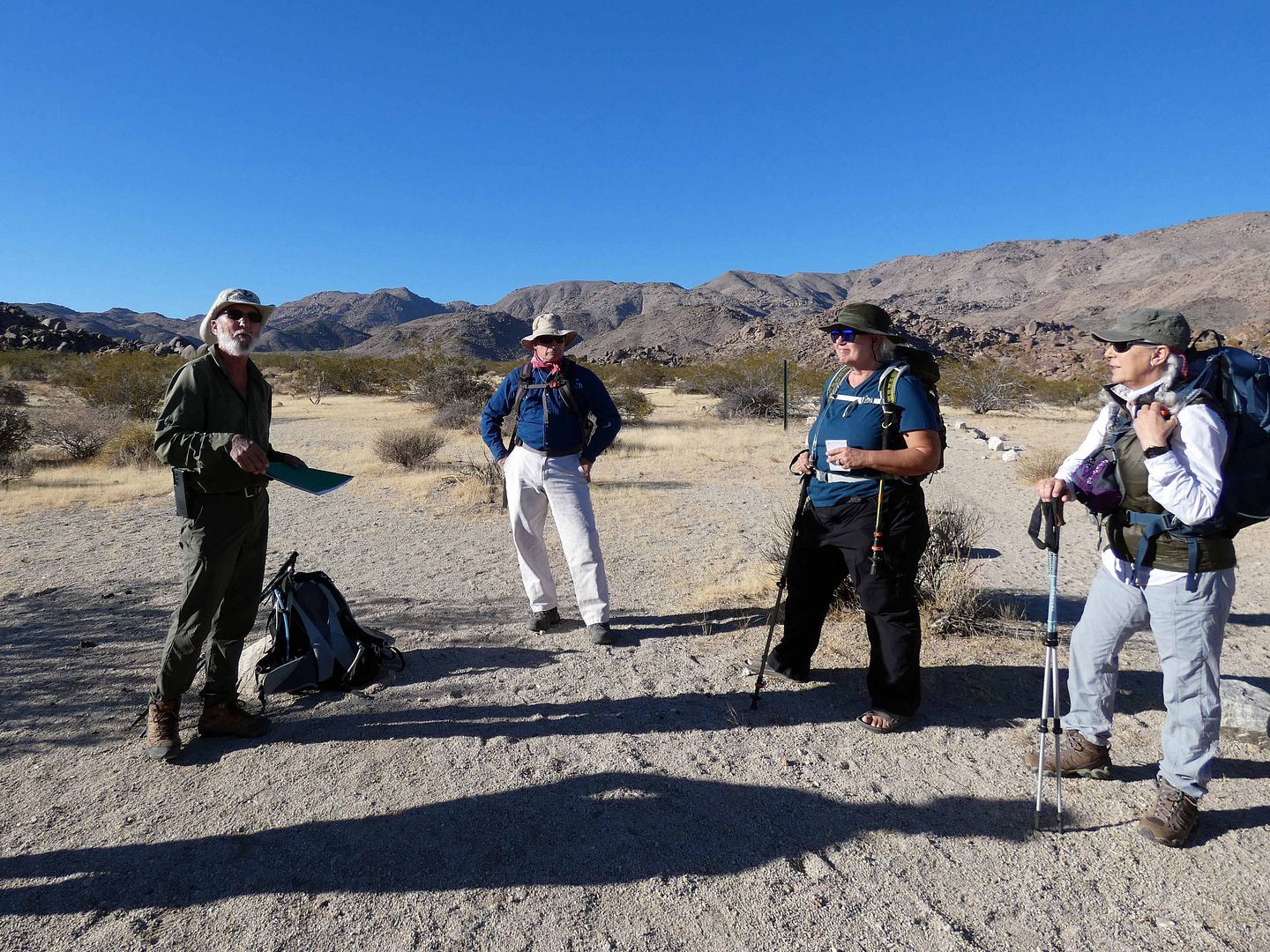

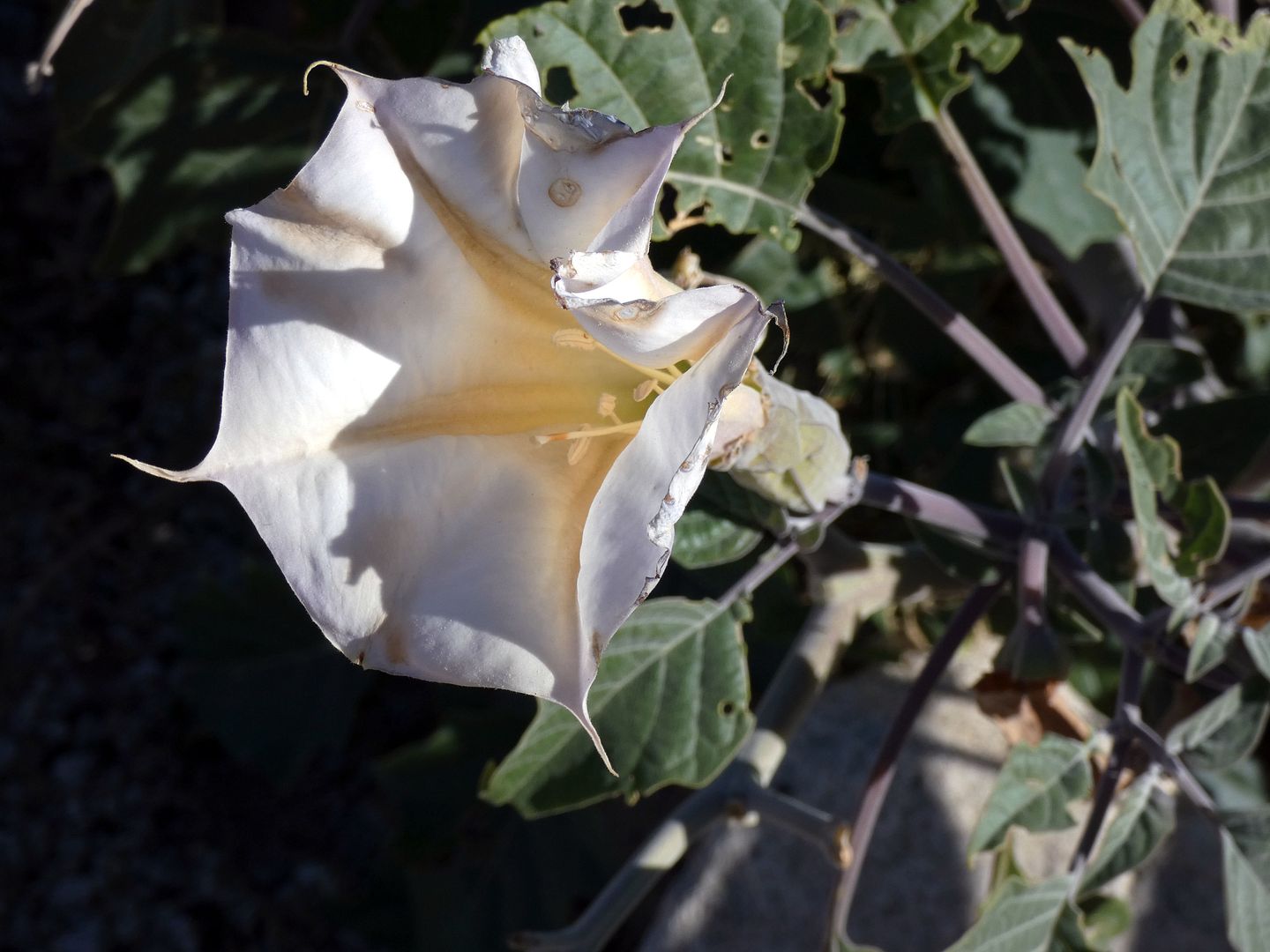
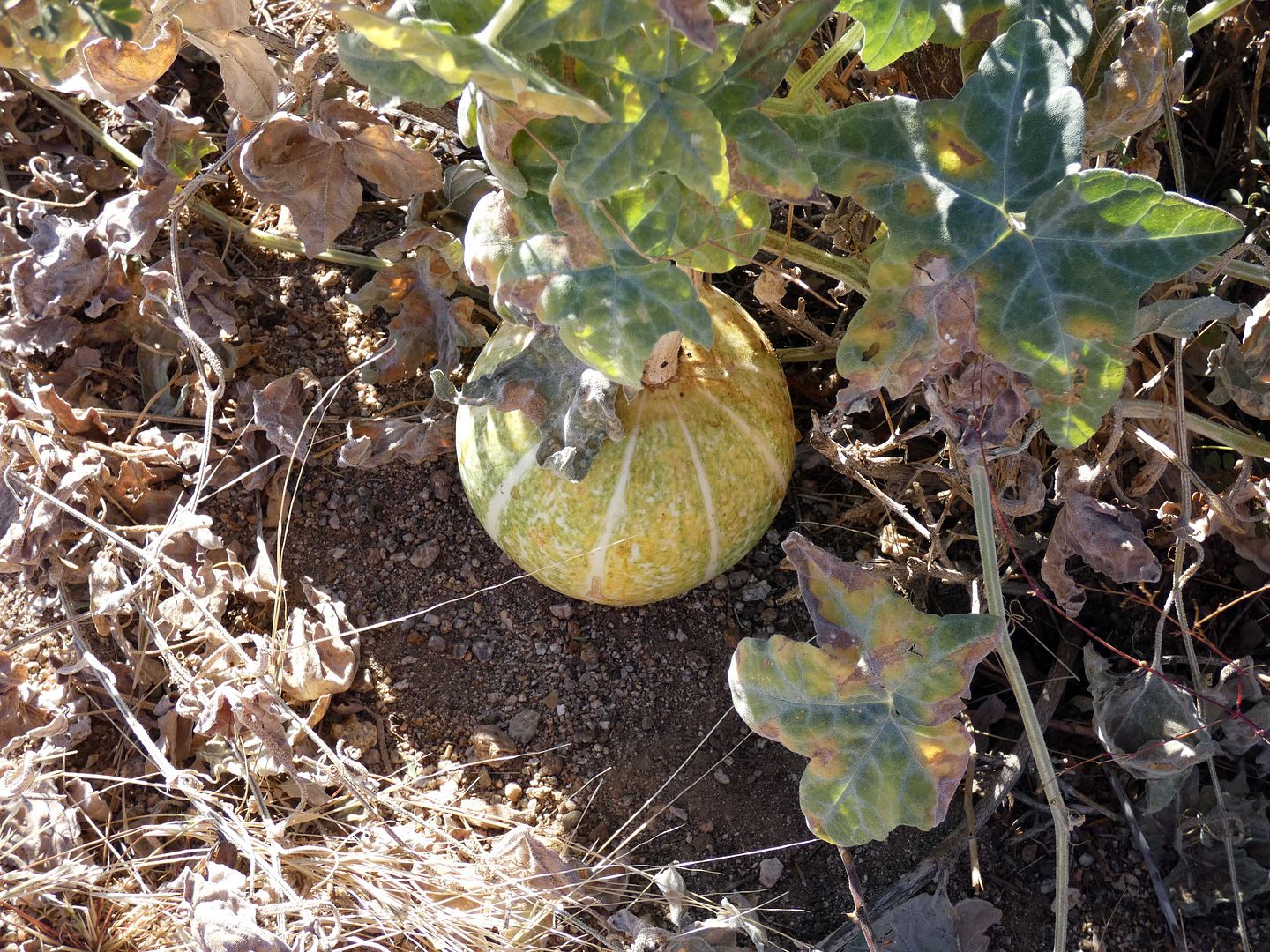
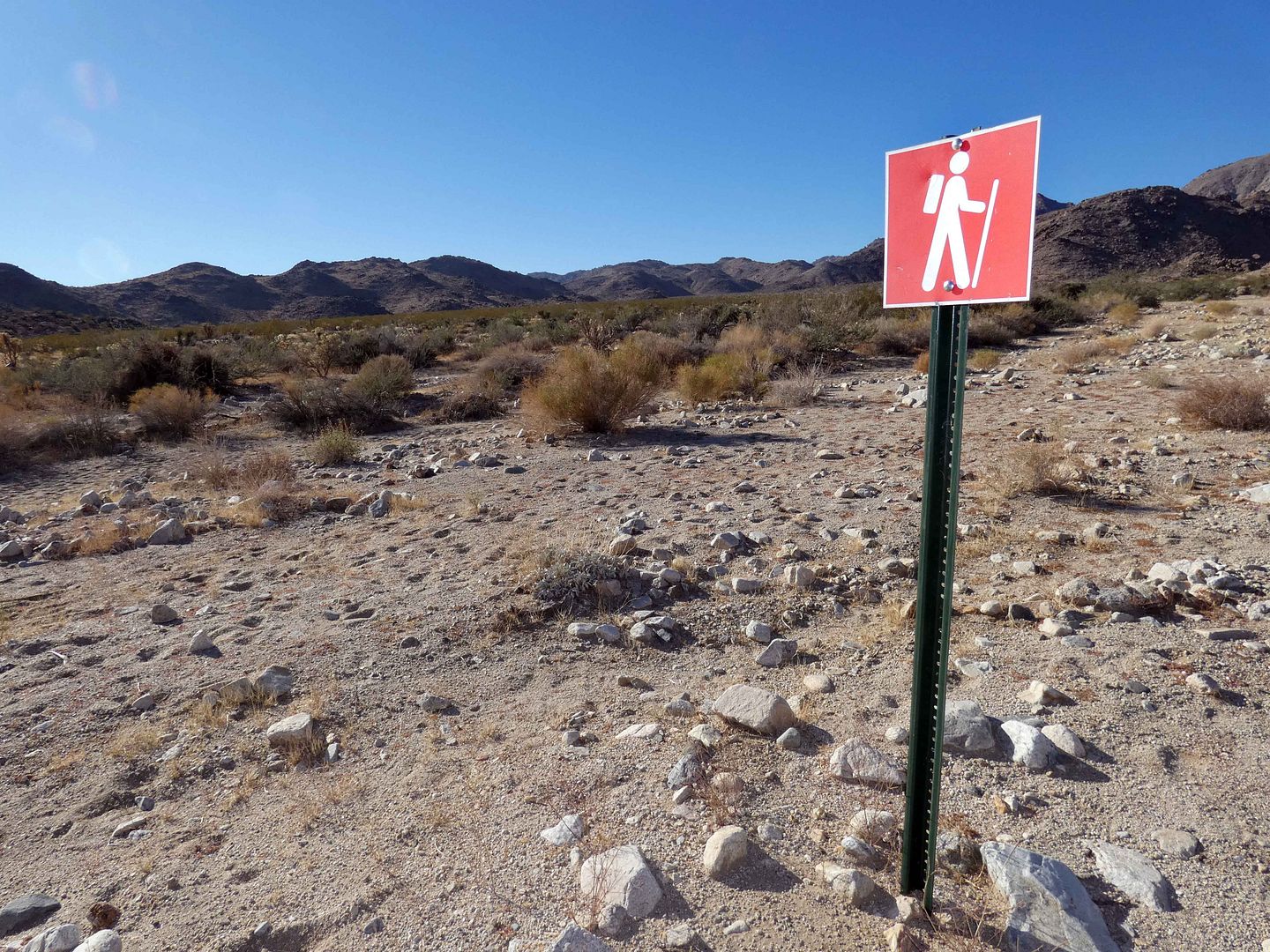
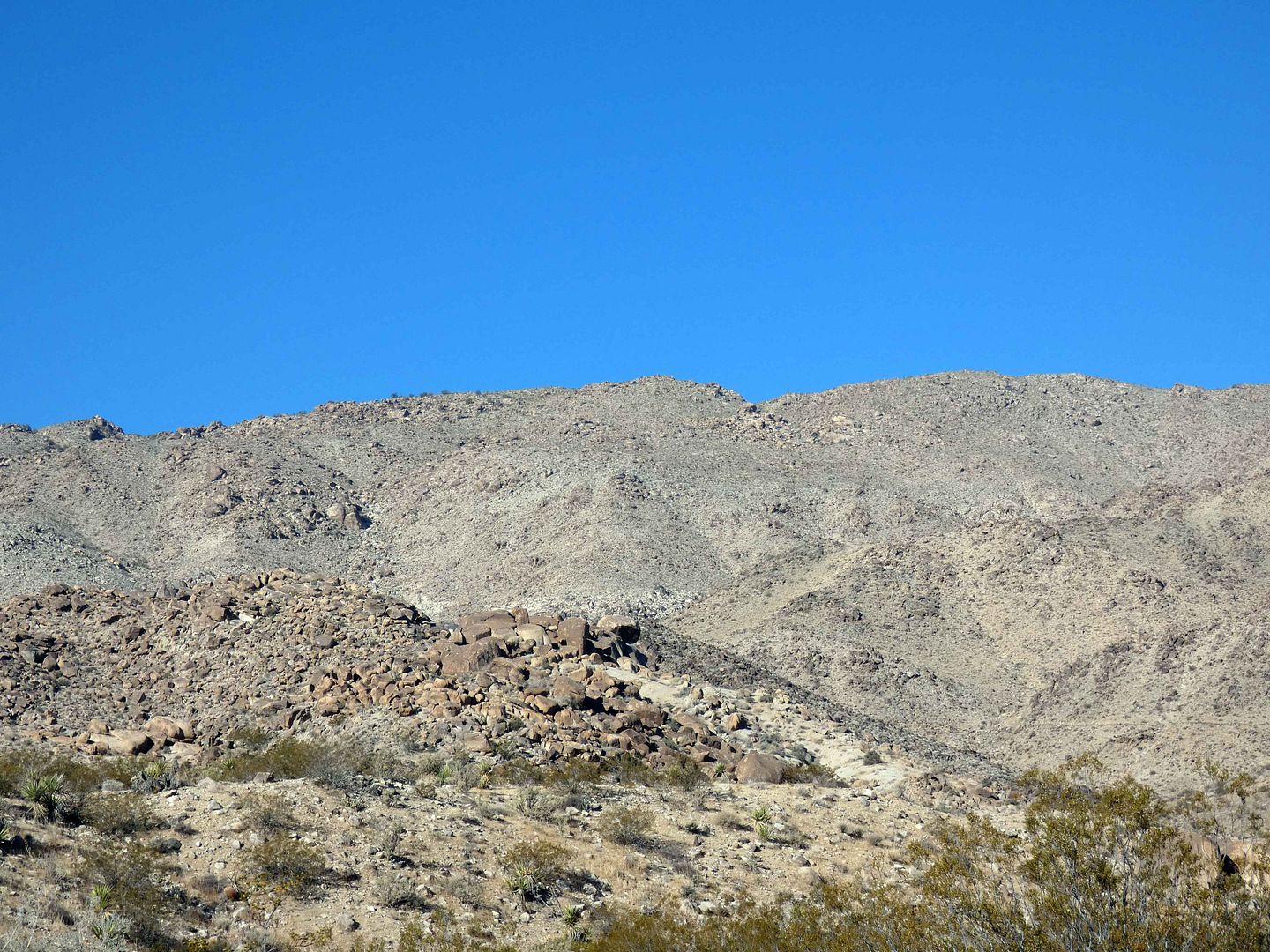
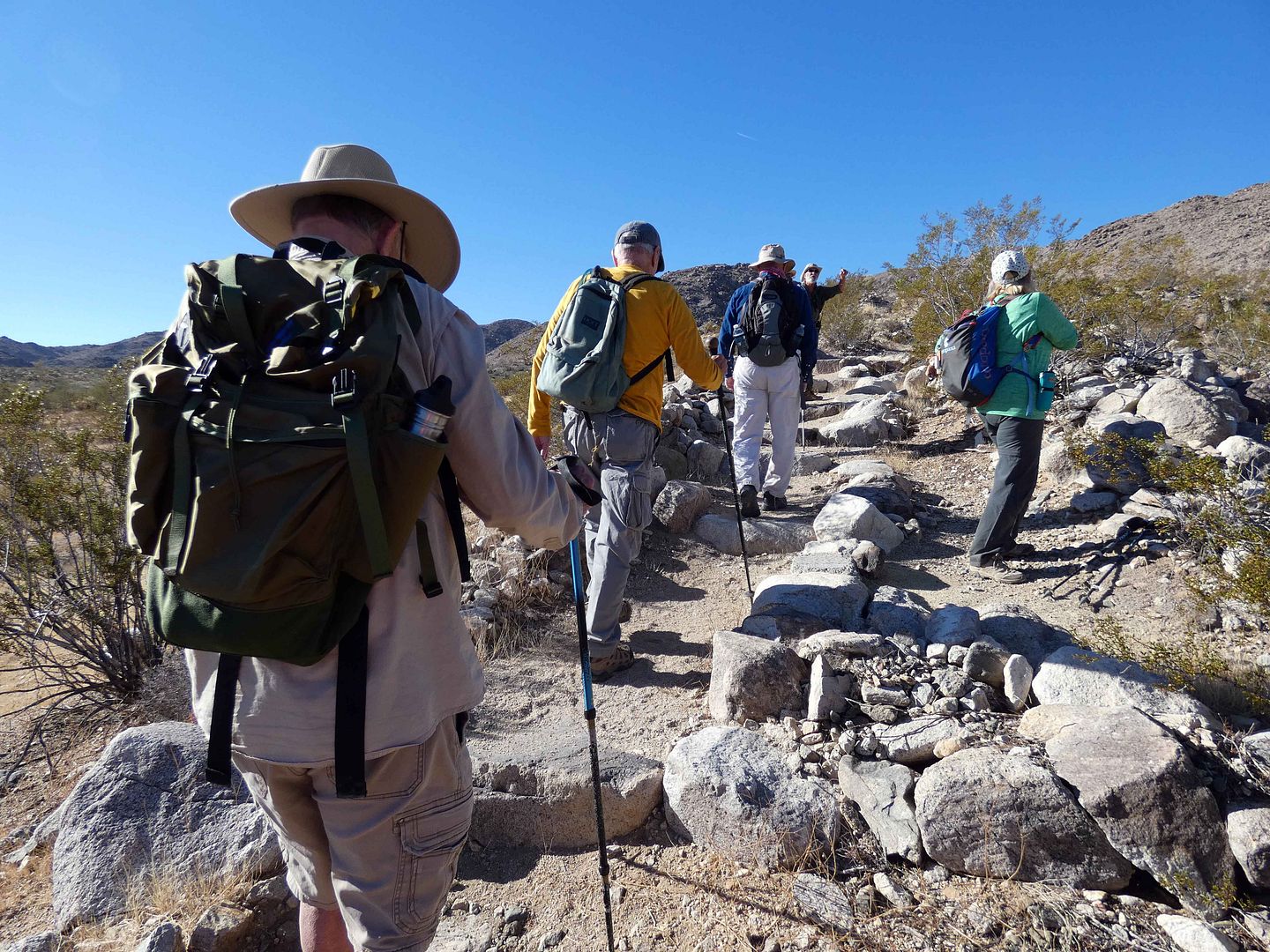
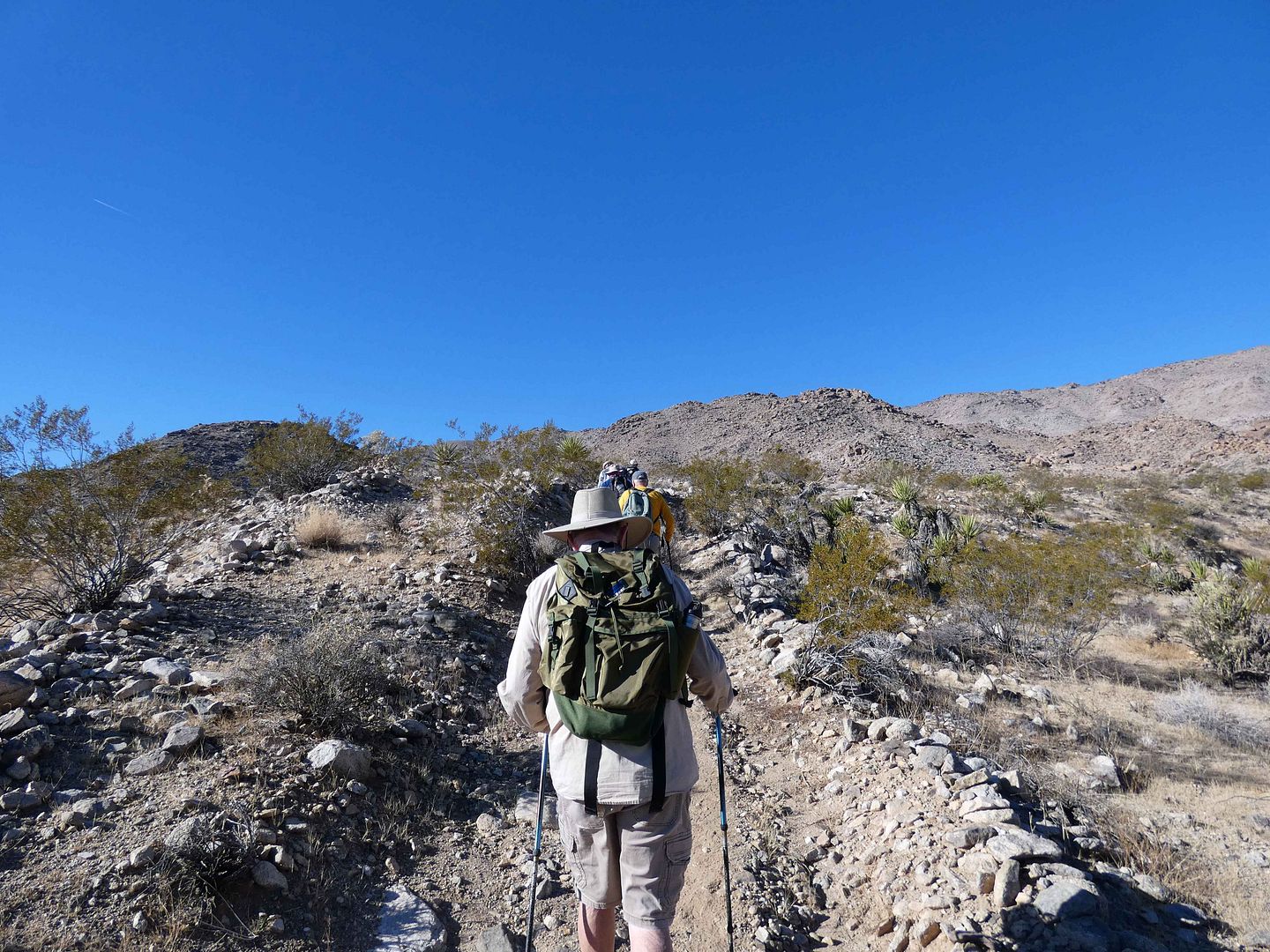
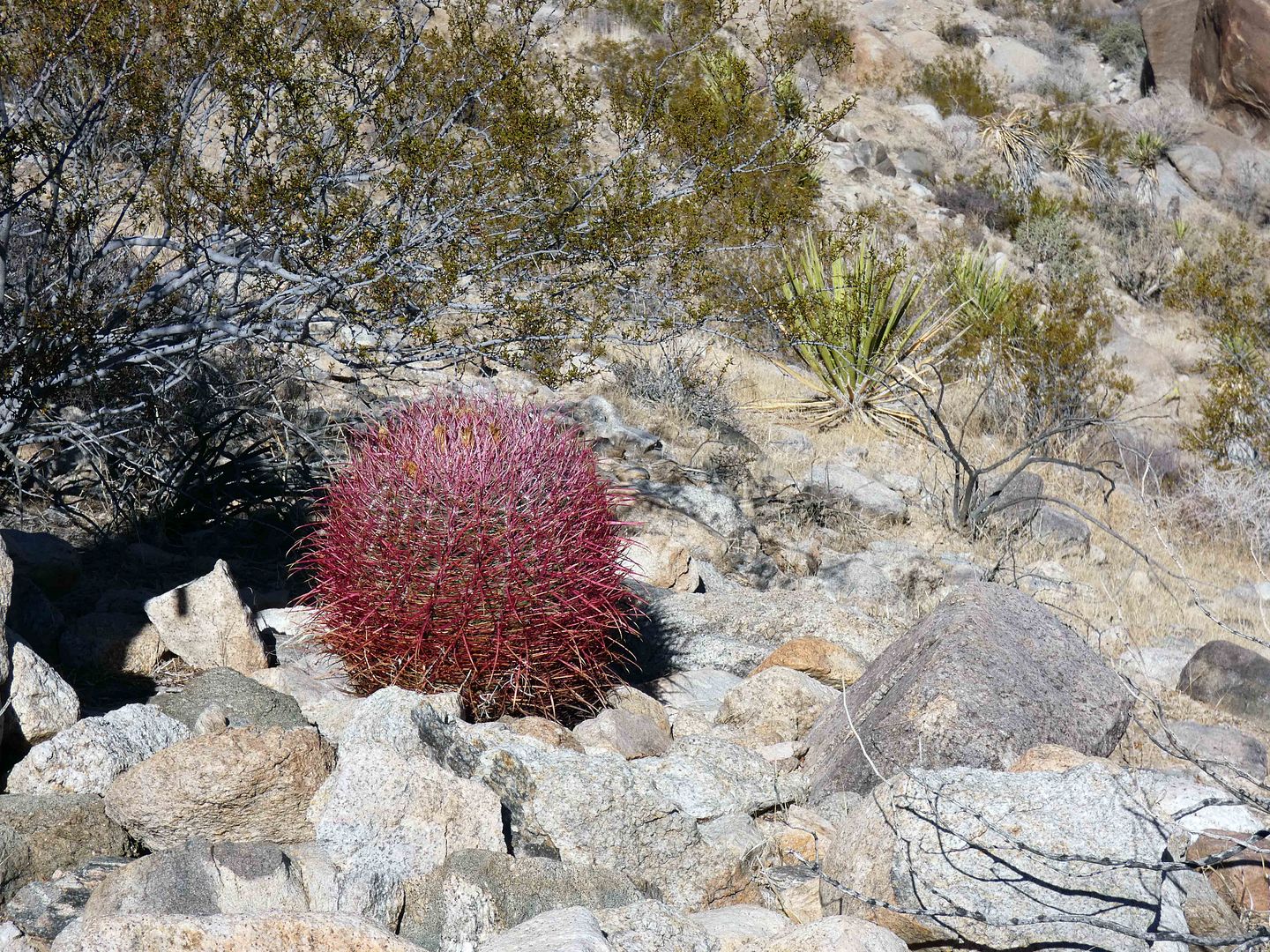


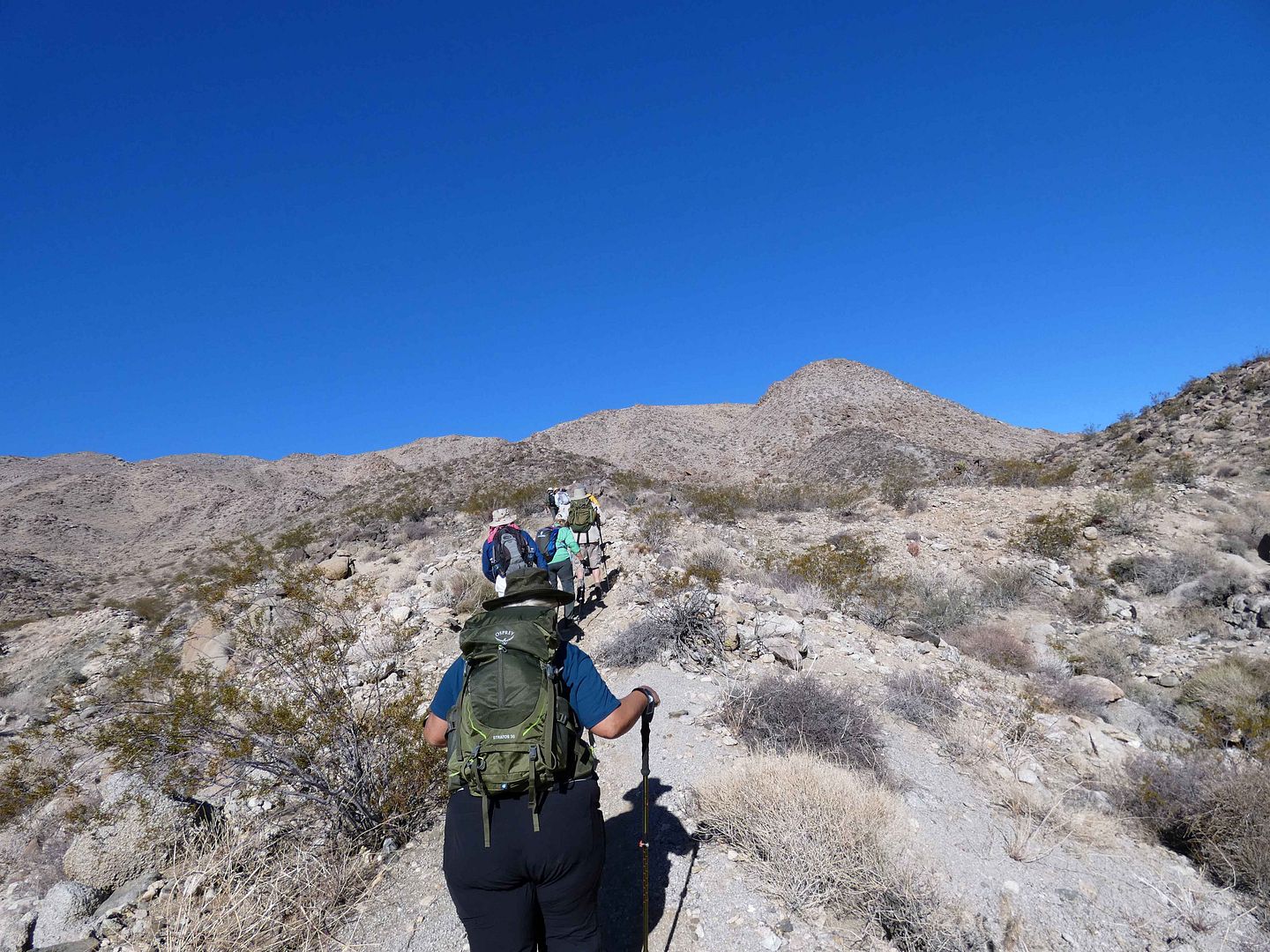
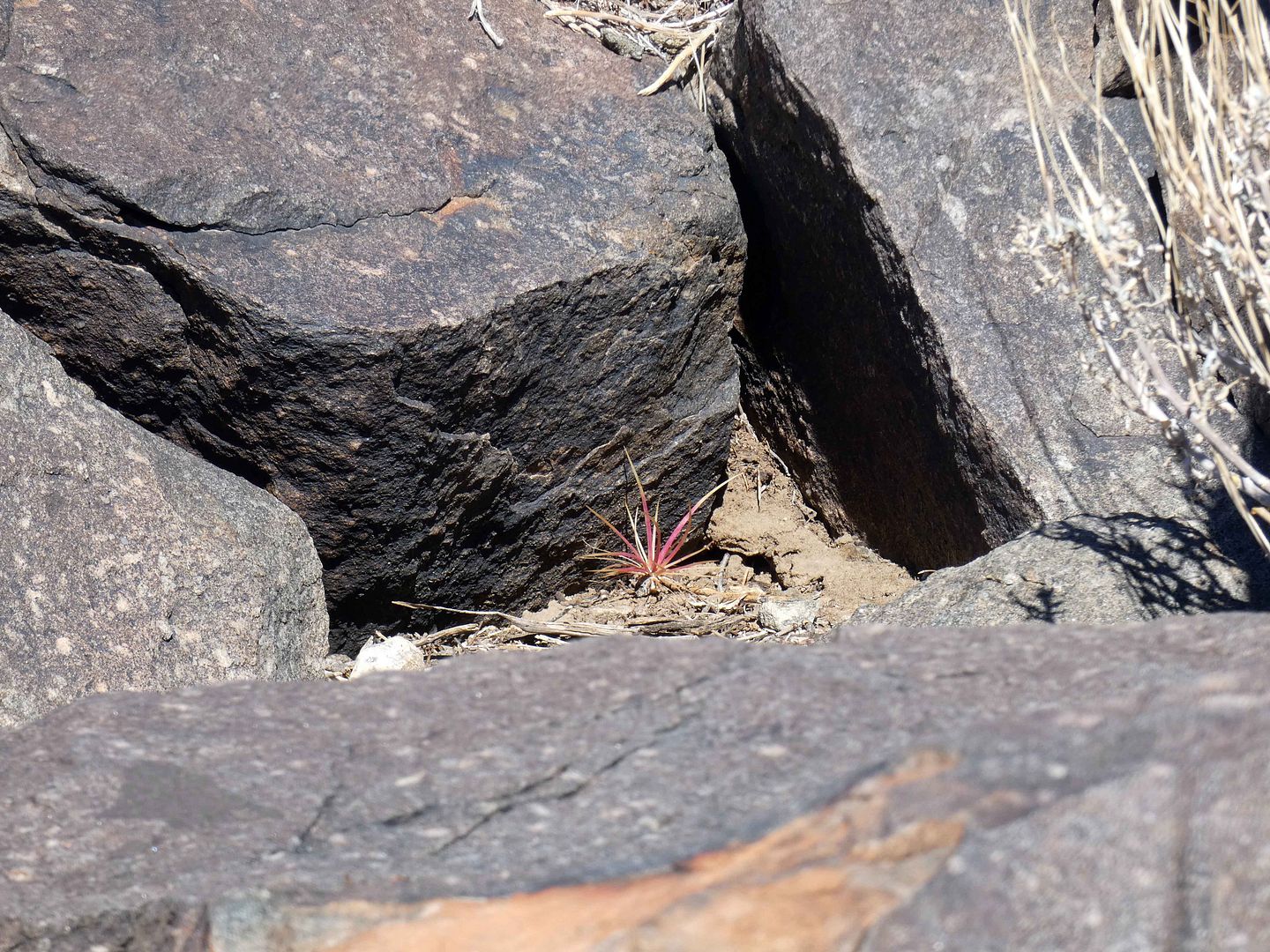
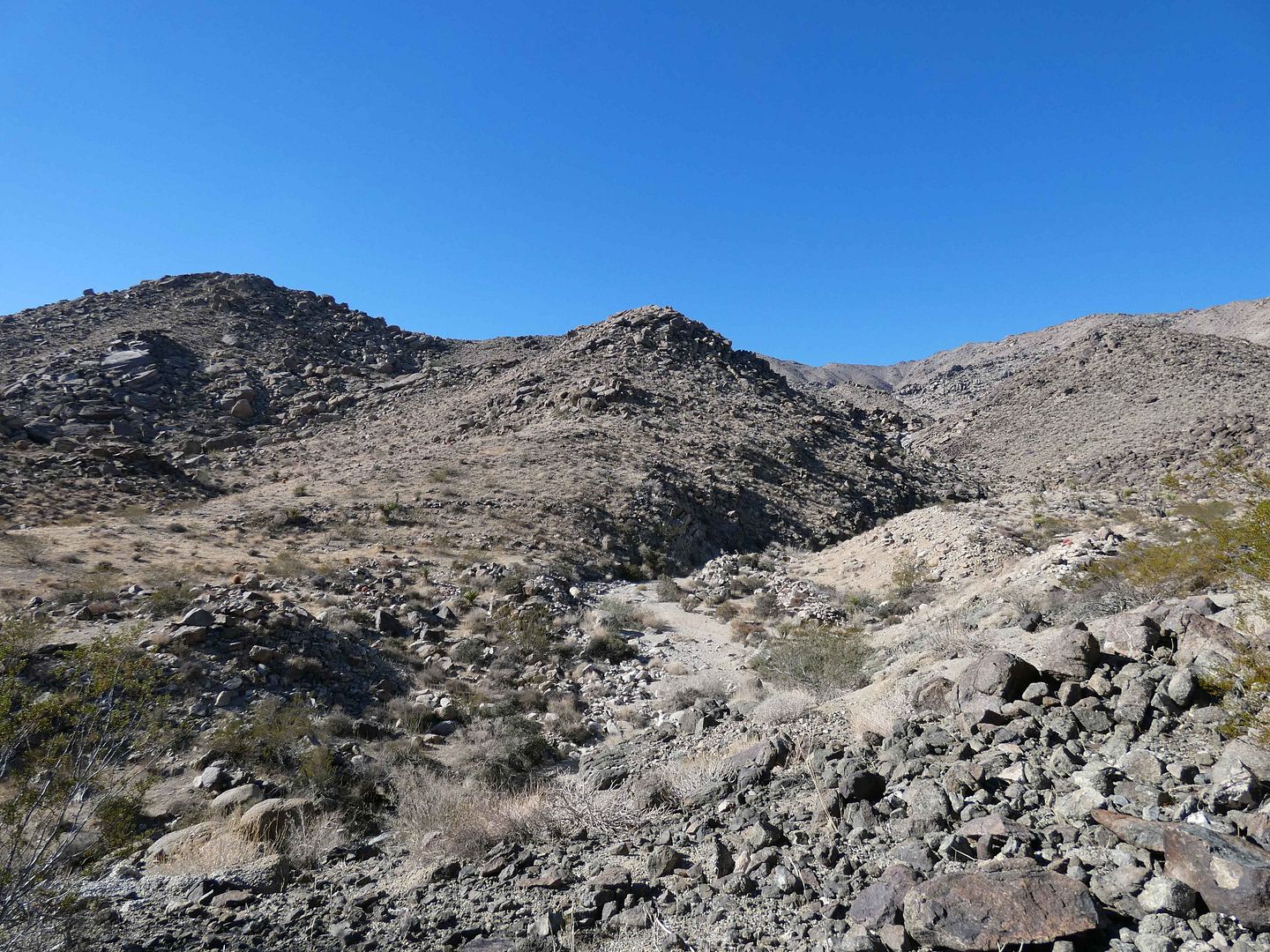
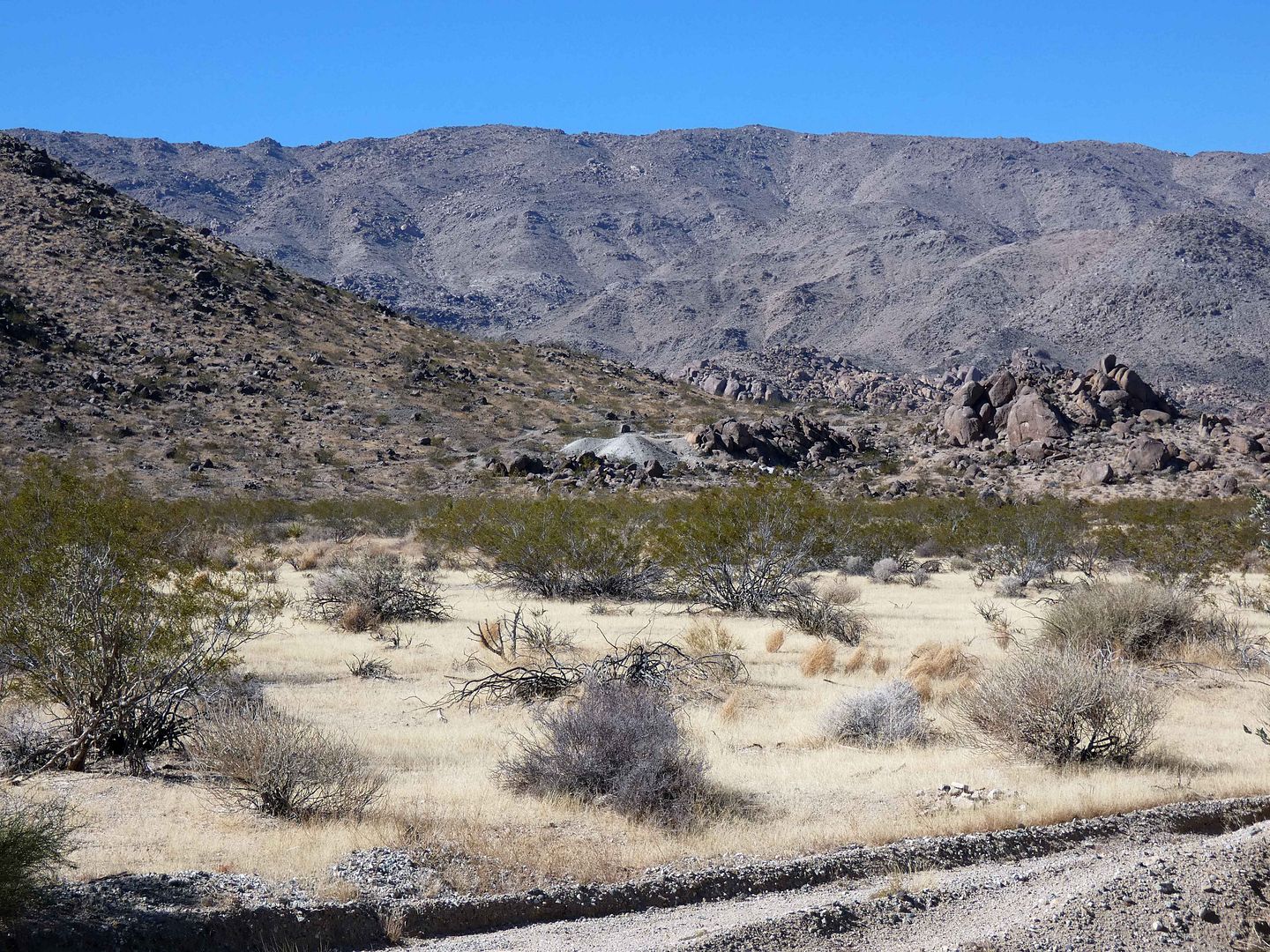
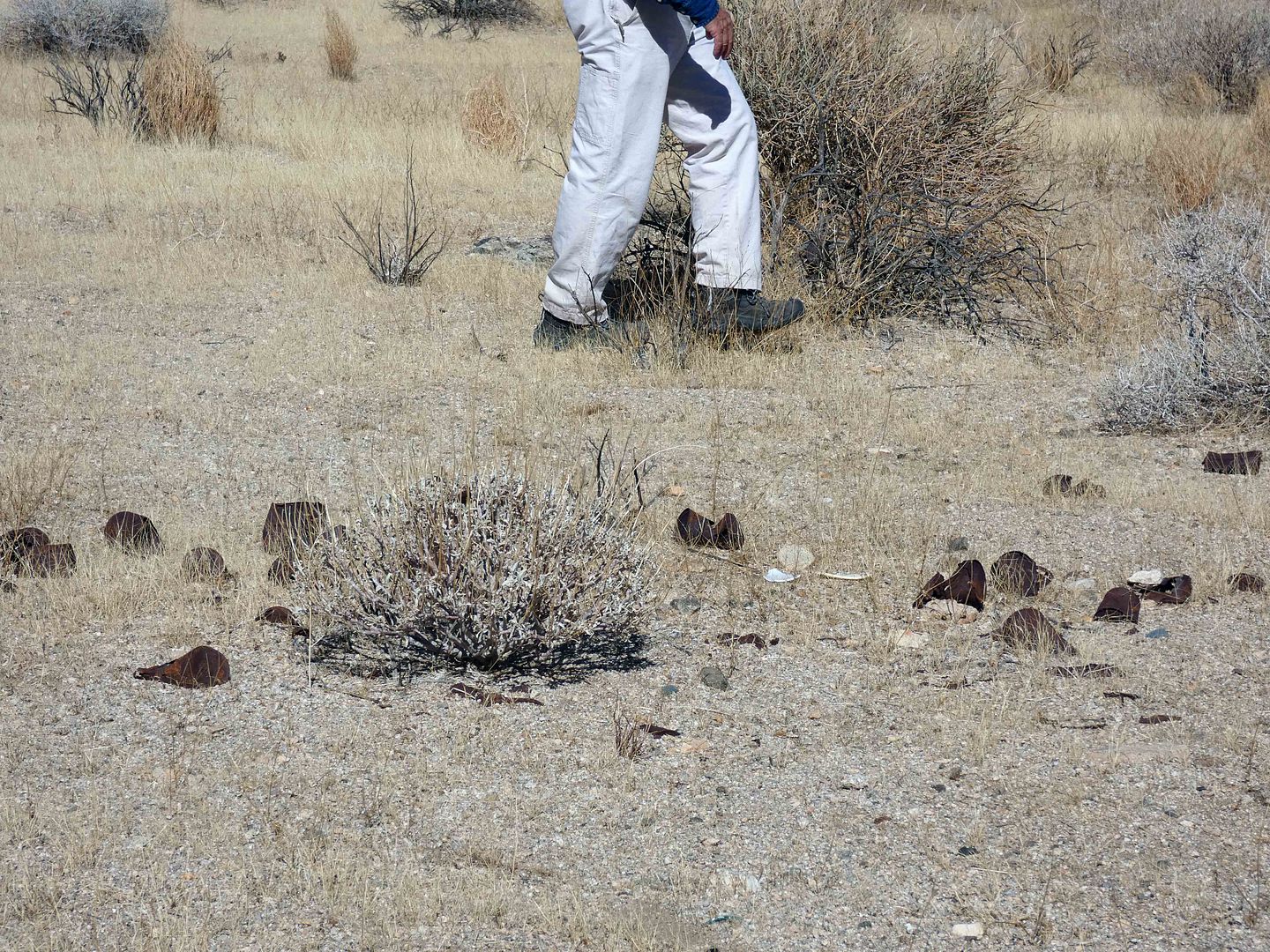
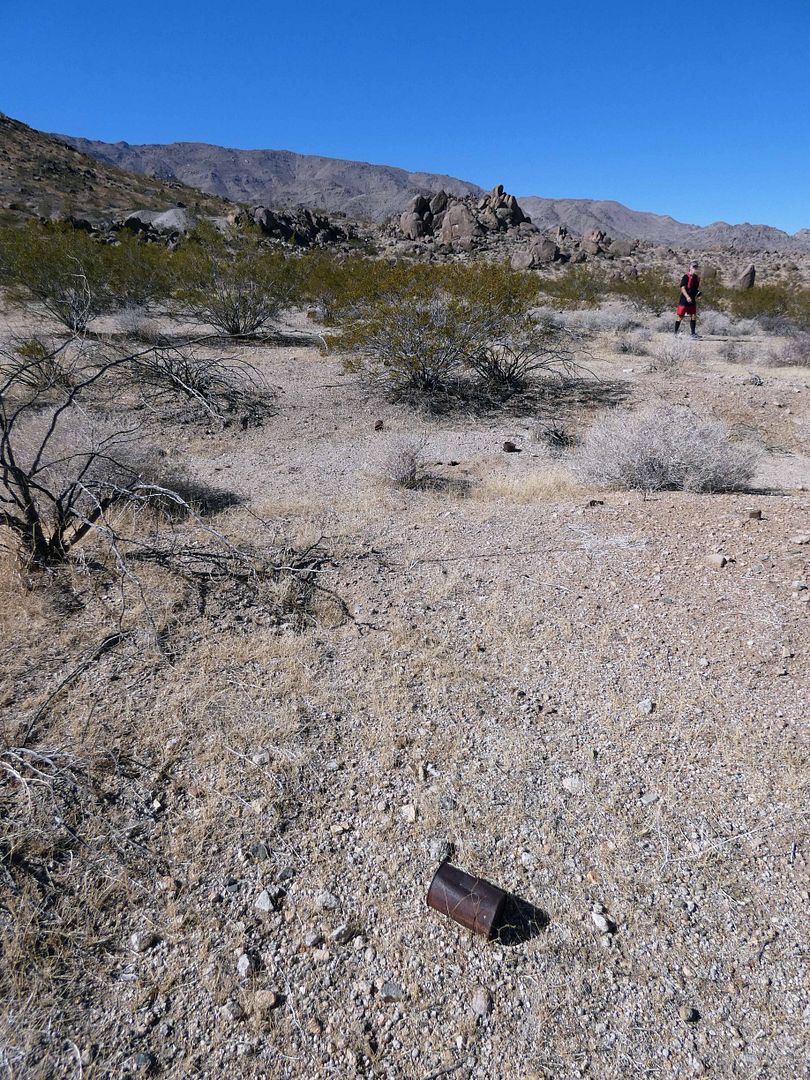
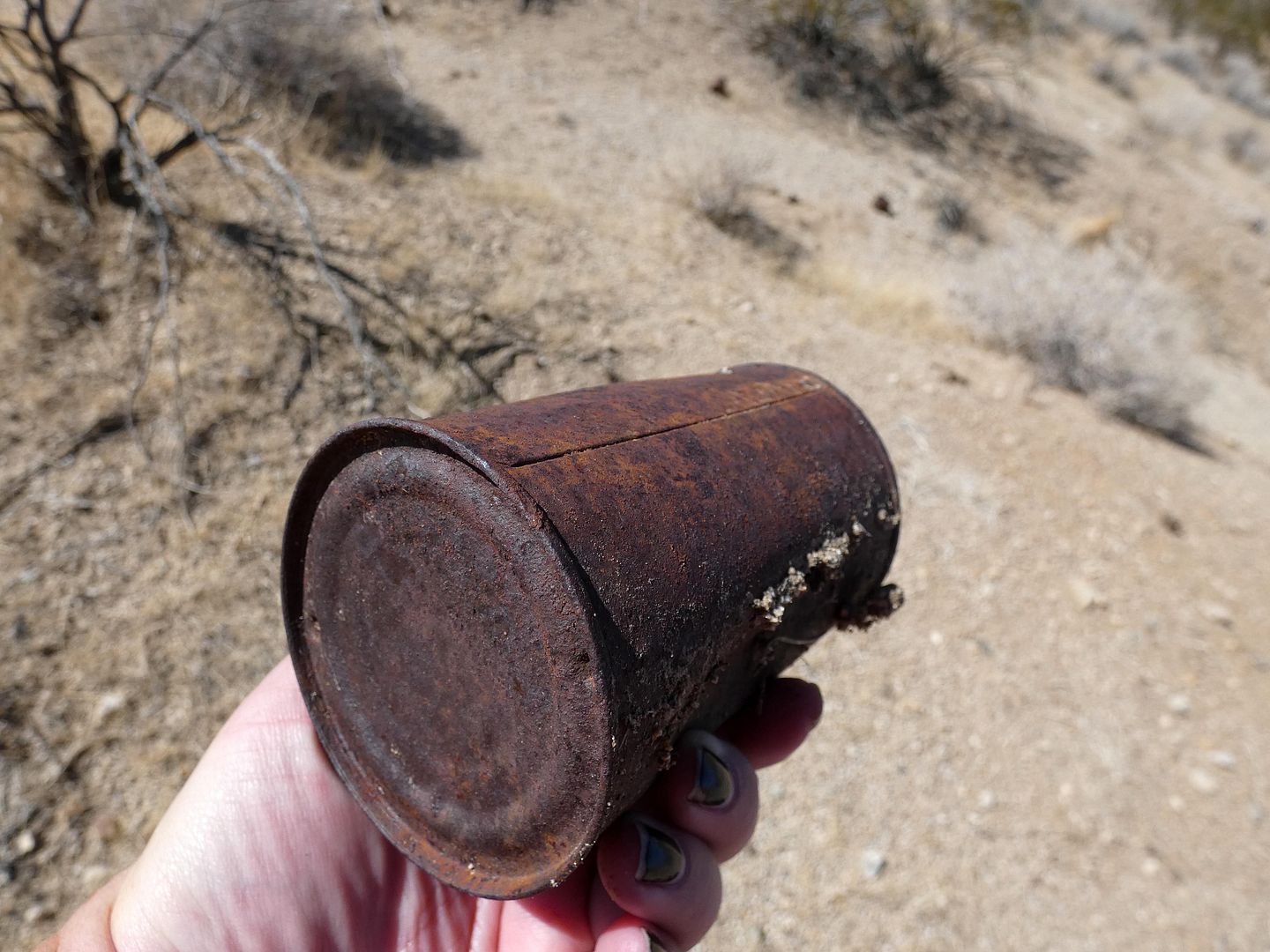
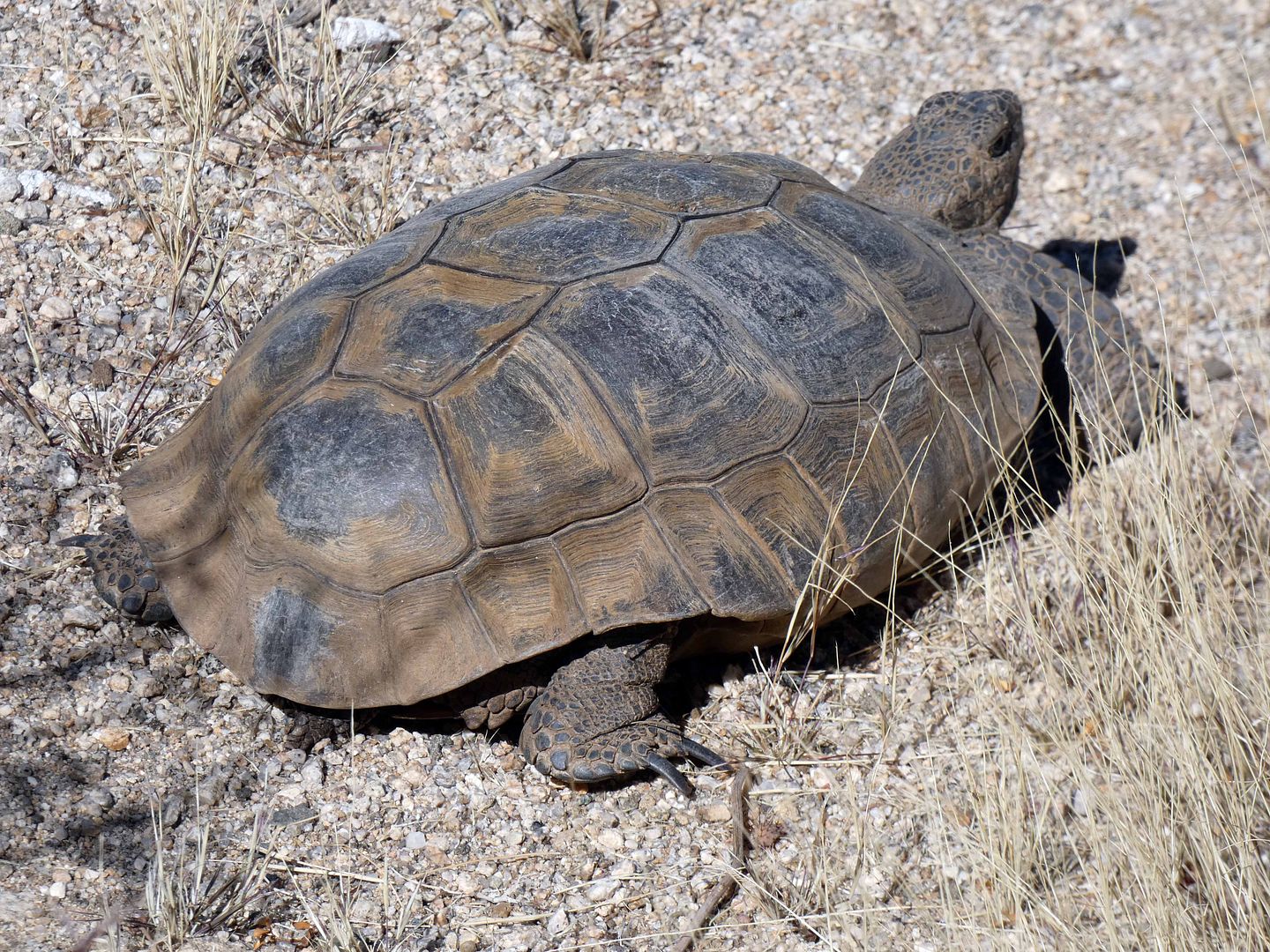
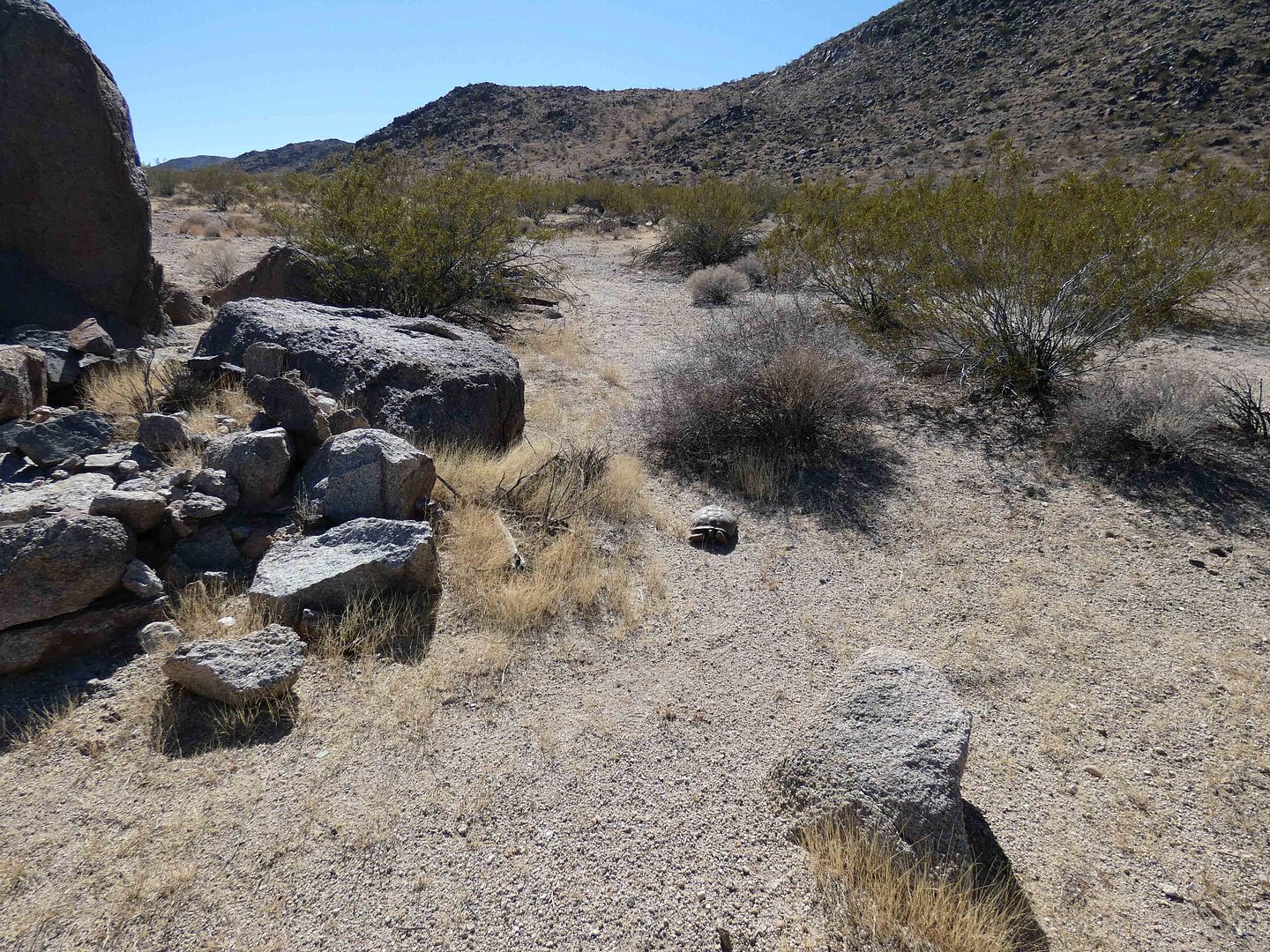

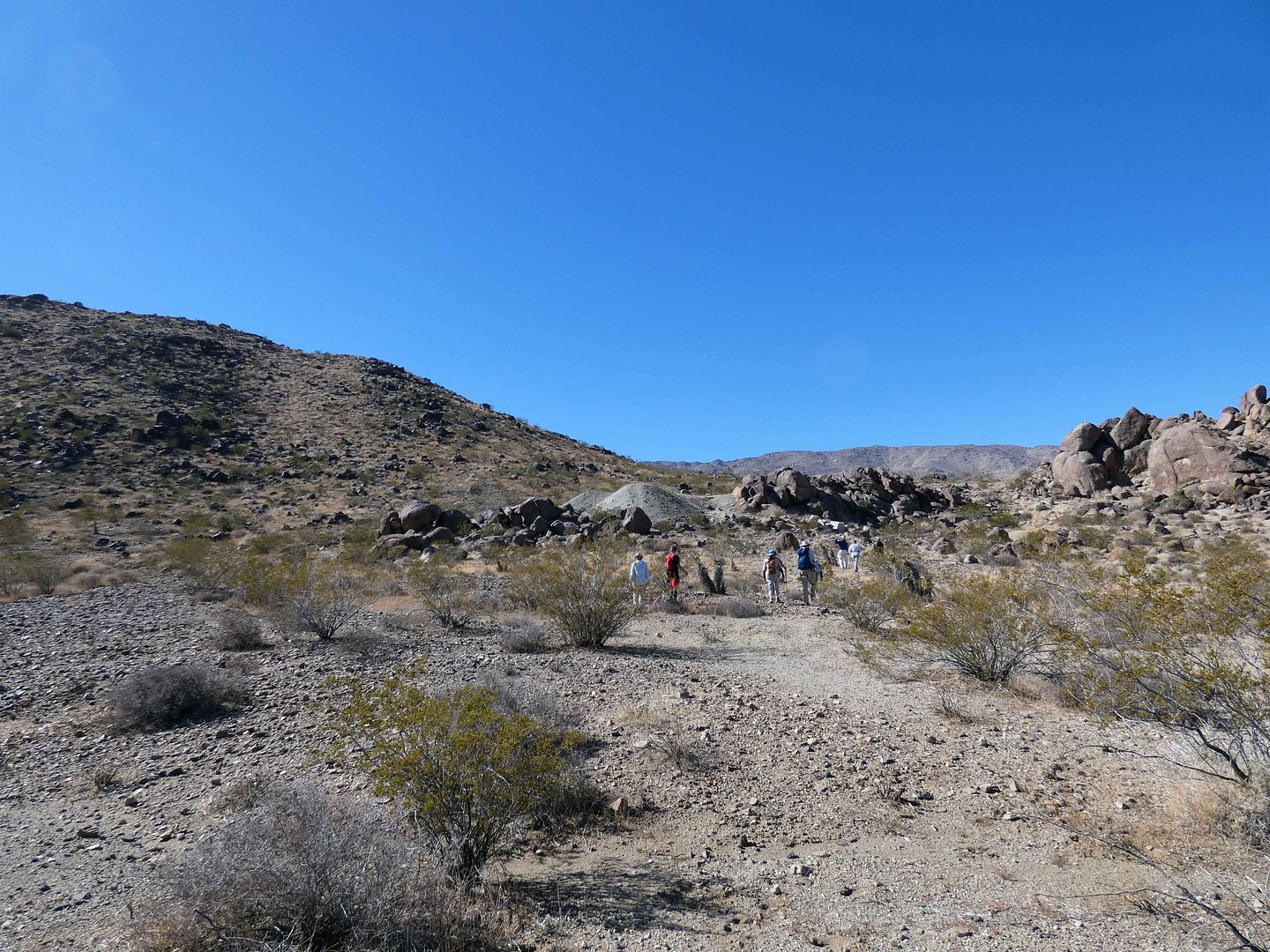

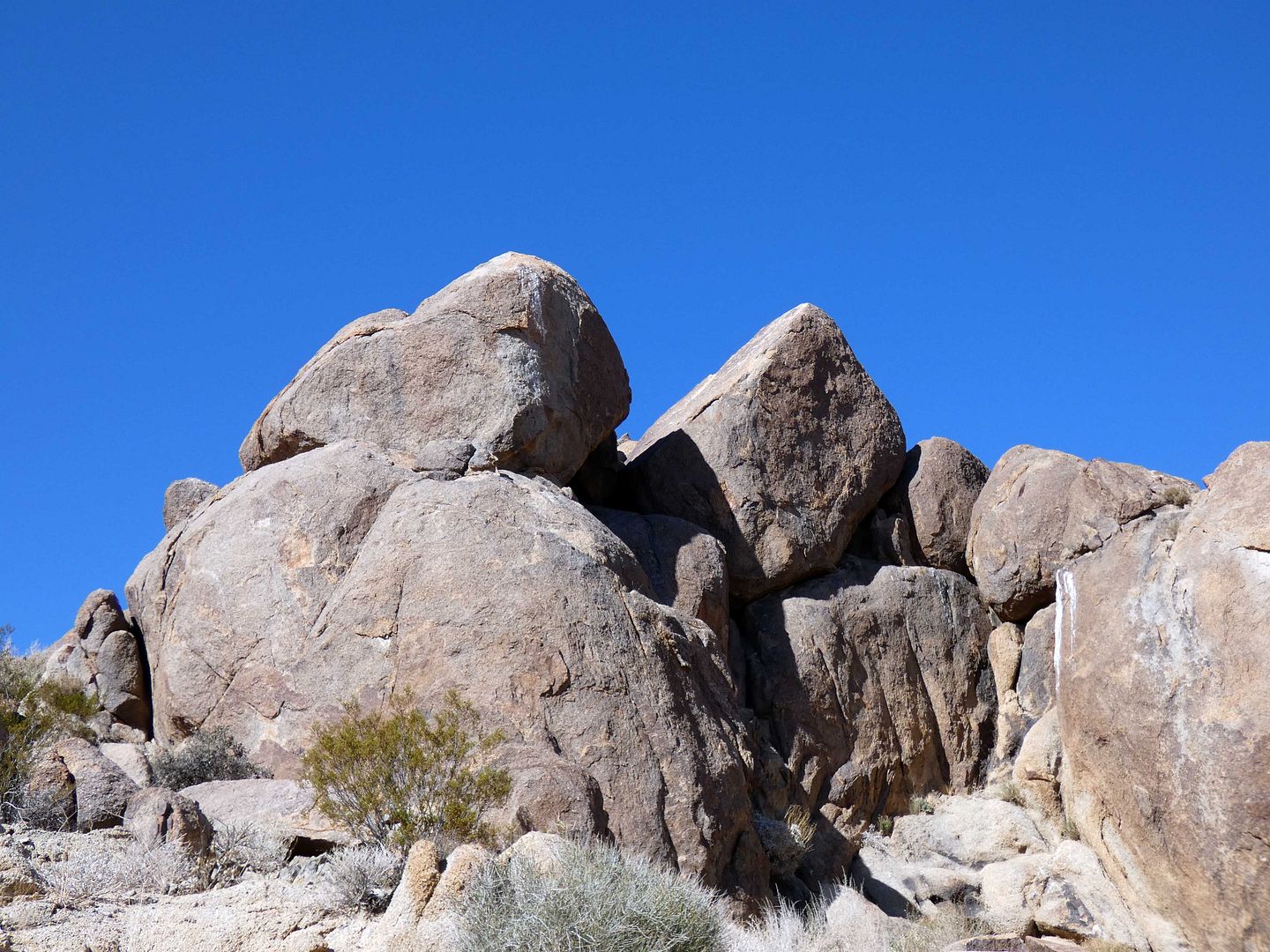

So I was excited to join the Desert Institute on a field trip back into the park—this time, near the Twentynine Palms entrance—to explore a couple of lesser-known mine sites.

The three-mile hike was described as "moderate," so I was pretty sure I could do it.

And the beginning of the journey was pretty easy, stopping occasionally to admire the flora, like the datura flowers (above)...

...and the native coyote melon (above).

But crossing the desert on foot is never really easy per se—because of temperature, sun exposure, disappearing trails that are difficult to navigate, or loose soil or sand underfoot.

And the first section of our hike was a slog through an alluvial fan, formed from the debris that had broken off the hills and mountains above and washed down and deposited into the lower elevation below.

But we continued on—up a service "road" for the Contact Mine site, one of nearly 300 mining sites located within the national park's current boundaries.

Much of the road had been constructed out of the mine tailings...

...and although it was much rockier than before, signs of thriving plant life (like barrel cactuses) continued to abound.

At this point, it was getting pretty steep—but I'd just conquered a steep, strenuous hike on San Miguel Island a couple of weeks before, so I knew I could do it.

The steeper it got, though, the more I began to fall behind the group (even asking if we could take it a bit slower).

The only way I'd been able to complete the island hike in October was to take it at my own pace, stopping frequently to enjoy the view. But on this hike, every time I caught up to the group, they were ready to set off again.

I turned back to the sweep (the volunteer who stays in the back of the group to make sure no one gets left behind) and asked, "What happens if I think I can't make it?" He said I could stay there and wait till the group got to the top and came back down, or I could walk back to the cars with a volunteer.

I chose the latter—and as I burst into tears, the volunteers bemoaned having to miss out on seeing what equipment and tram tracks remain at the mine. I felt guilty, but not that guilty. This was a strenuous hike, no doubt about it—one I wouldn't have signed up for, had I known the conditions. Two other hikers in the group—both older than me, but in much better shape—eventually joined me at the cars, having turned back early themselves.

The unforgiving landscape along the hike was a good taste of what prospectors and miners had to deal with from the1870s to the 1930s or so, sometimes with the help of mules or burros. Looking for gold—much less actually finding and processing it—was only for the most dedicated and bullish of the lot.

Fortunately, there was a second part of the excursion—and that was a much easier visit to the nearby Anaconda Mine site (a.k.a. the "Sullivan No. 1" mine, named after its owner, Phil "P.T." Sullivan of Taylor-Sullivan Mining Company), which had us walking through the detritus of an old mining camp.

It was mostly rusty old metal cans—common artifacts at sites like this.

Over the years, they've gotten filled with dirt—although reportedly, lots of them used to contain sweetened condensed milk.

Nowadays, the lone inhabitant of the Anaconda mine camp is a small desert tortoise.

I'd never seen one in the wild before, so it was a thrill to spot the scat he'd left behind and track down his location...

...keeping, of course, a safe distance.

After tracking a coyote running through the rocks and keeping our eyes open for bighorn sheep (borrego), we continued on...

...getting closer to the turn-of-the-century mine where some gold was actually found and extracted.

Among the giant boulders...

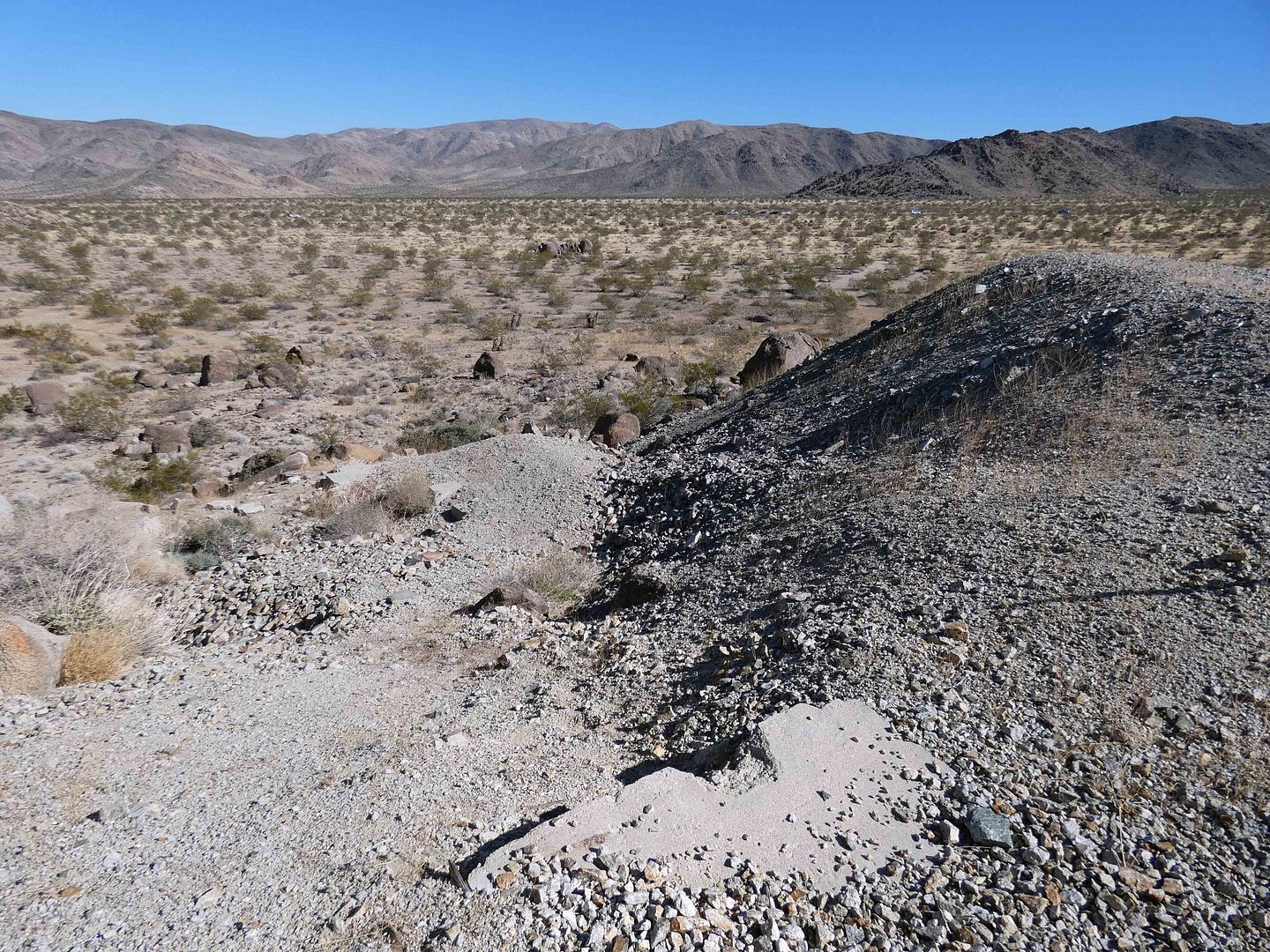
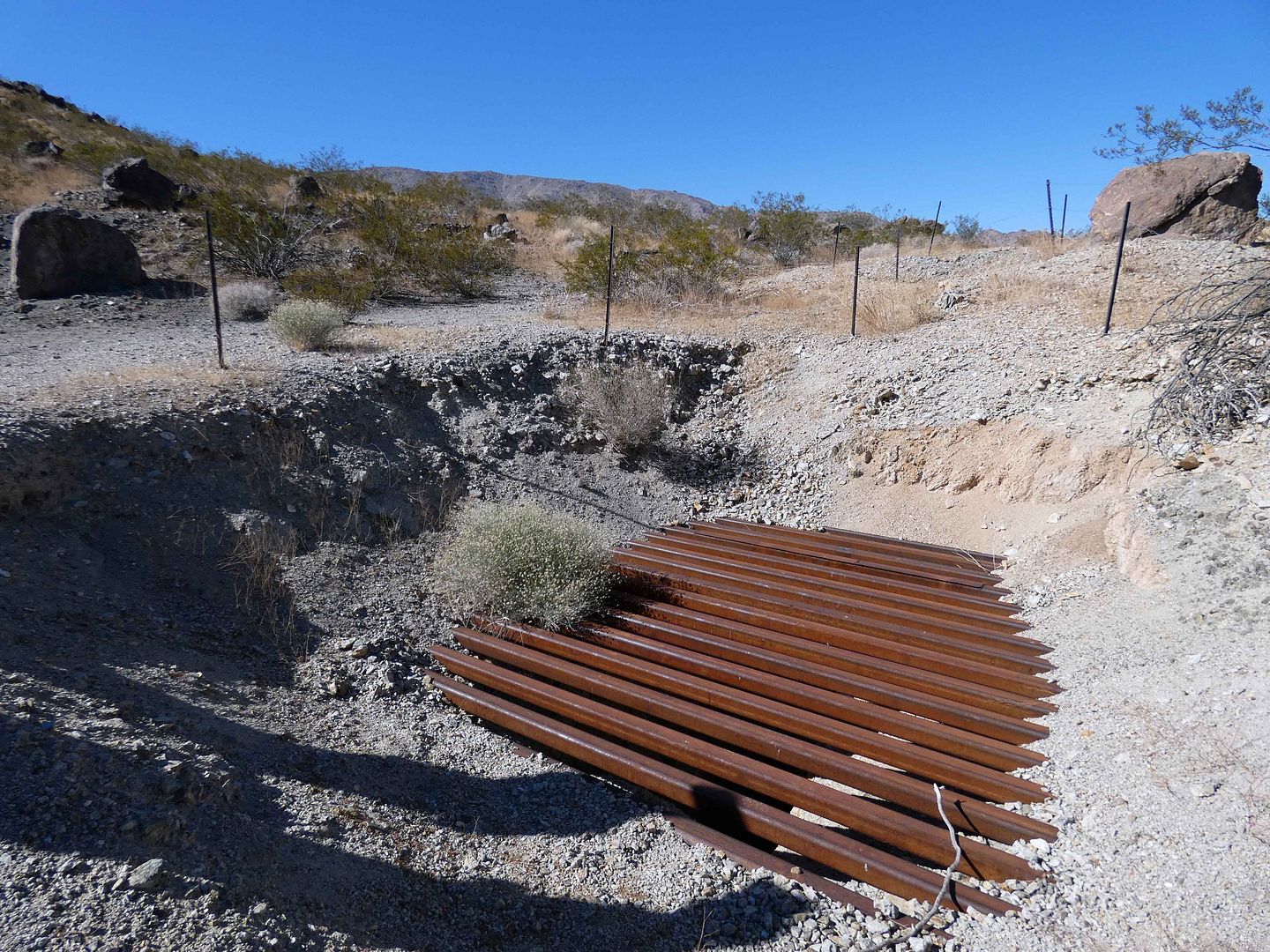

...there is one dug-out (probably pick-axed) opening that reveals a quartz vein (which is usually a sign of gold ore, as gold deposits are considered "impurities" of quartz).

But the real payoff came from climbing that big mound we'd seen from the road, which actually still features some intact concrete steps and platforms.

Of the two mining pits/shafts that are clearly visible (both probably originally deeper than 100 feet), one is covered in a bat gate... 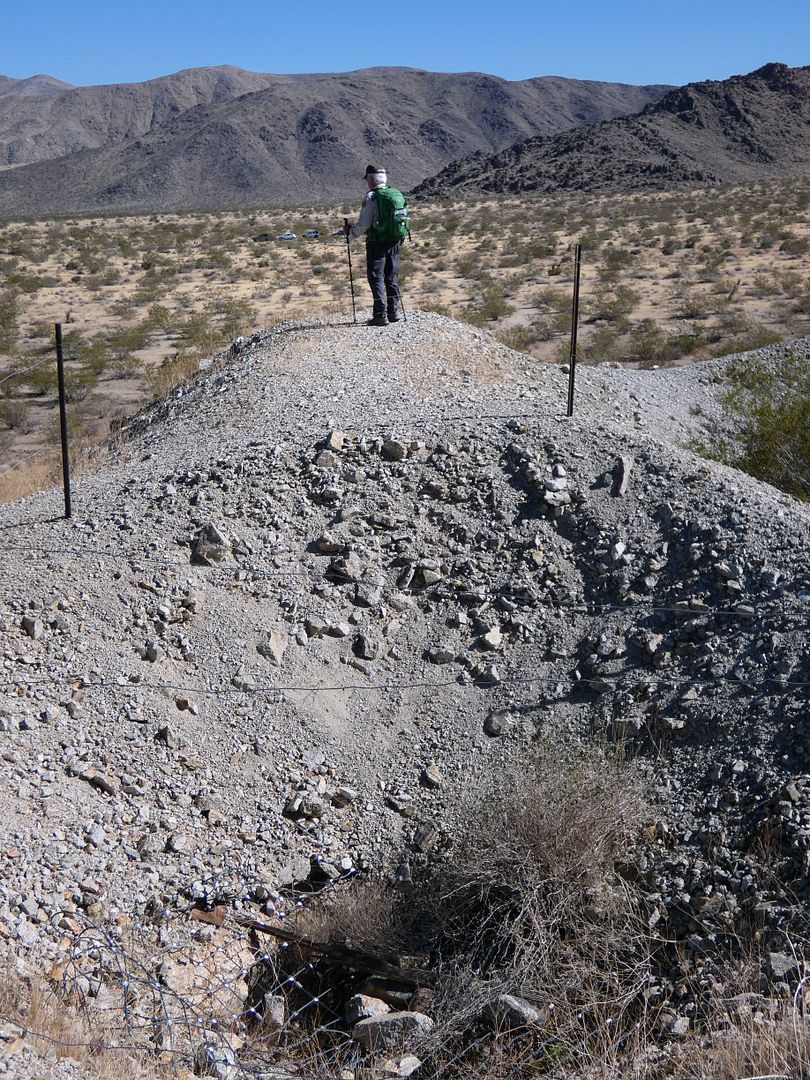

...while the other has been backfilled and is covered in mesh. 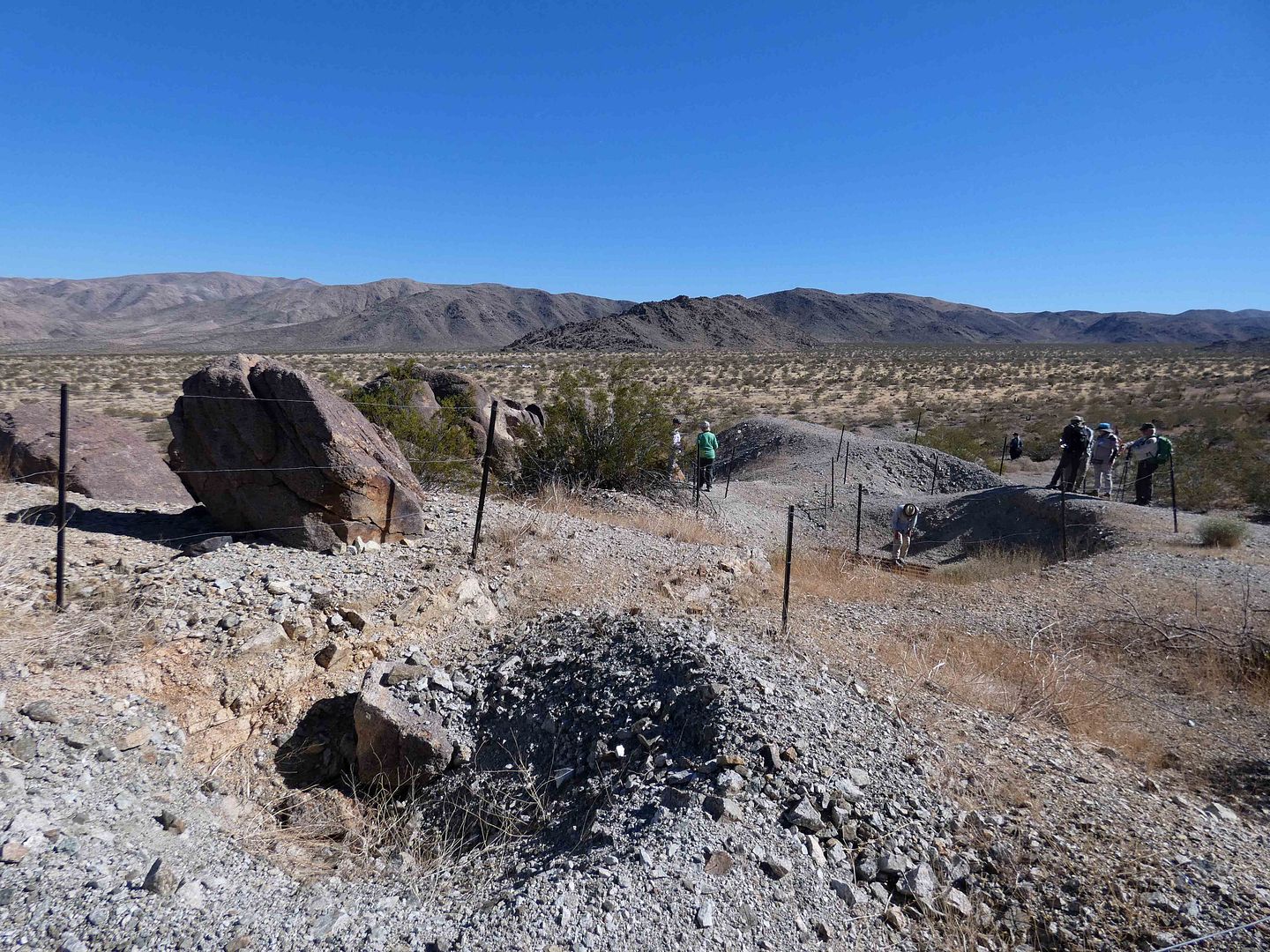

There had also been a stamp mill for processing ore up there, helping to make it a particularly productive site in terms of gold mining.
Looking back, I wonder if I should've just suffered through the entire hike to the Contact Mine site, since that was probably my only chance to ever see it. But at the time, I had to do what felt right for my wellbeing—and even if I'd made it to the top, I still would've had to have climbed all the way back down, feet rolling on rocks, heels digging into debris.
Was I that desperate to see yet another mine site—one that isn't even considered particularly historic? No, not really.
And when I got back to my car at the end of the day, after visiting Anaconda and limping through what I thought was a rock in my left sneaker, I discovered something that had been making my experience especially uncomfortable that day: a tack sticking up through my shoe sole and insoles, straight into my left heel.
Related Posts:

Golly! What an experience, Thank You for sharing - AND - I sure hope you are okay. 💙
ReplyDeleteThe puncture wound on my heel has healed!
DeleteFascinating Thankyou !
ReplyDelete